
- Share via
Diego Pablo had trained the young man in the craft of burning human bodies down to ash.
Inside the crematorium, 44-year-old Pablo watched as his protege prepared to push the rose-covered cardboard coffin into the furnace’s yawning mouth.
“What’s next?” Pablo asked, a gentle reminder to the 23-year-old — who towered over him — that something was missing.
Tristen McBride, who wore a blue coat that fell above his jean-clad knees, snapped his fingers. He had forgotten the roller used to ease the box into the cremation chamber. It was only his third night shift in the crematory at Hollywood Forever Cemetery.
For at least a decade, Pablo had worked alone. But that was before the COVID-19 surge began in November. Before Los Angeles County saw a death rate that was more than double that of pre-pandemic years. Before officials temporarily suspended air-quality regulations that limit the number of cremations in order to address the backlog.
Before the virus swept through the one-bedroom Pablo shared with his two cousins in December, keeping him home for weeks as the death toll rose and the bodies kept coming. Before one of the bodies to be returned unto dust was someone Pablo loved.
Last responders like Pablo have a front-row seat to the pandemic’s toll: more than 460,000 deaths nationwide and counting. Cremation rates have increased across the country, as families grapple with the financial burden of death.
These workers haven’t experienced the relief of seeing COVID-19 patients recover, only families’ sorrow for ones who could not be saved.
Pablo has seen so much death over the years that he wonders if it’s changed him, forced him to build a protective wall.
“When it hits us personally, I try to feel what these families feel. When you feel the pain and the tears. But nothing comes out. I feel nothing,” he said. “Sometimes I worry I have a hard heart. A cold heart.”
“I think that’s what’s helped me do this job for so long.”
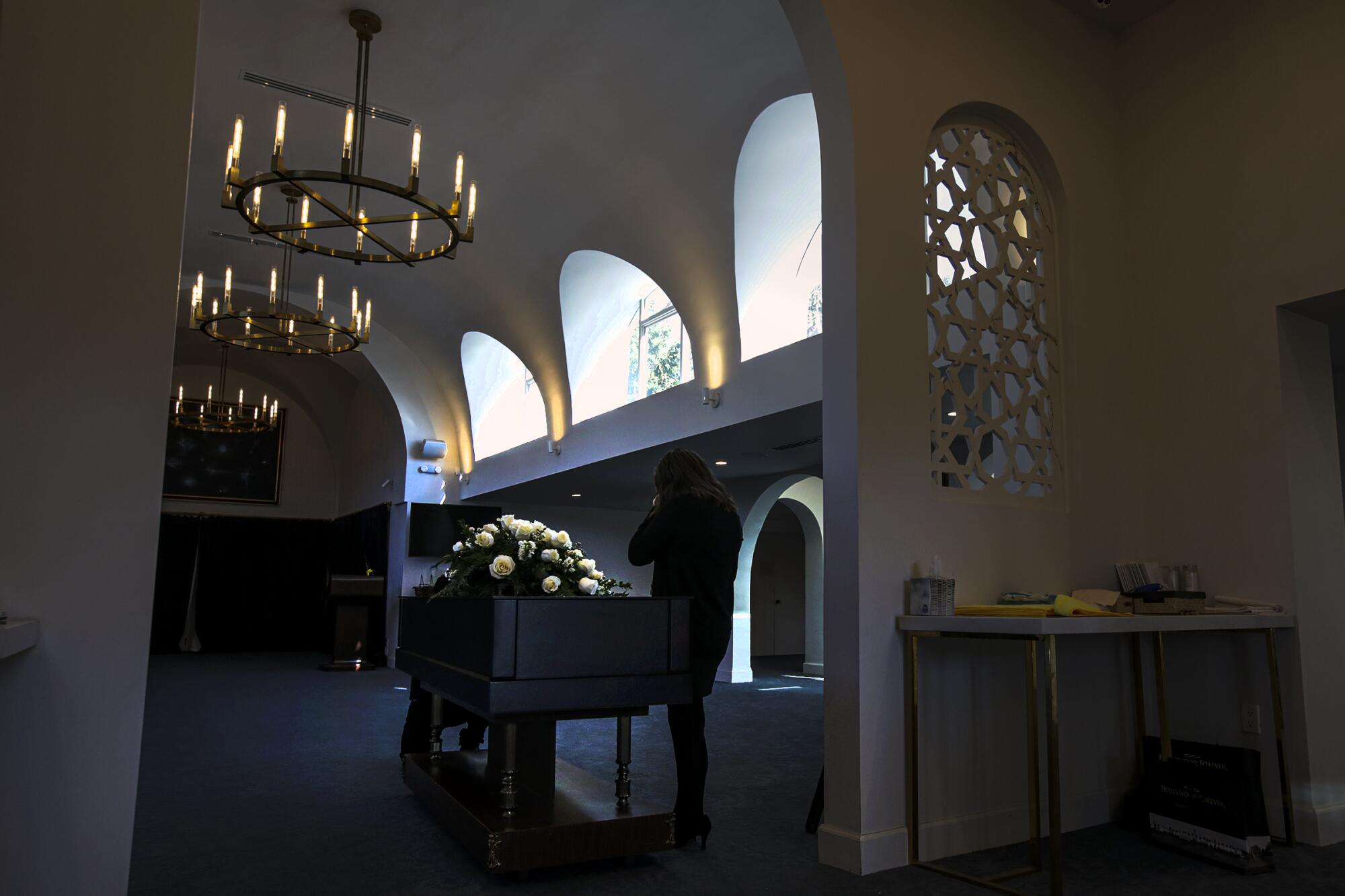
At Hollywood Forever, the number of cremations each day has doubled. The cemetery added McBride on the night shift, increased refrigeration capacity and hopes to install a second cremation chamber soon.
McBride, who has the youthful face of someone who hasn’t seen much death, did data entry at the cemetery over the summers. He had never worked in a crematory.
“I didn’t realize all of the detail and the effort that goes into it,” said McBride, whose father is the superintendent of the cemetery. “I thought it was more like throwing something into a fire. But it’s a lot more complex than that.”
Pablo saw the numbers start to climb after Thanksgiving. Like him, many of the dead were Latino.
“Empezaron a llegar, y llegar, y llegar, y llegar,” Pablo said. They began to arrive and arrive and arrive and arrive. Last month, he and McBride cremated 58 people. In January 2020, Pablo cremated 17.
So many people have died in Los Angeles County that in January — for the first time in its history — the South Coast Air Quality Management District suspended regulations that limit cremations. The executive order has been extended twice and now includes Orange and Riverside counties.
White Emerson Mortuary, a family-run funeral home and crematory, faced having to shut down the crematory about halfway through January because of the regulations. After the executive order, it was one of nearly a dozen facilities that advised the agency that they’d be cremating more.
Phil White, the fifth generation of the family to own and operate the Whittier mortuary, said it stopped allowing family members to watch their loved ones’ bodies being placed in the chamber because it took up too much time.
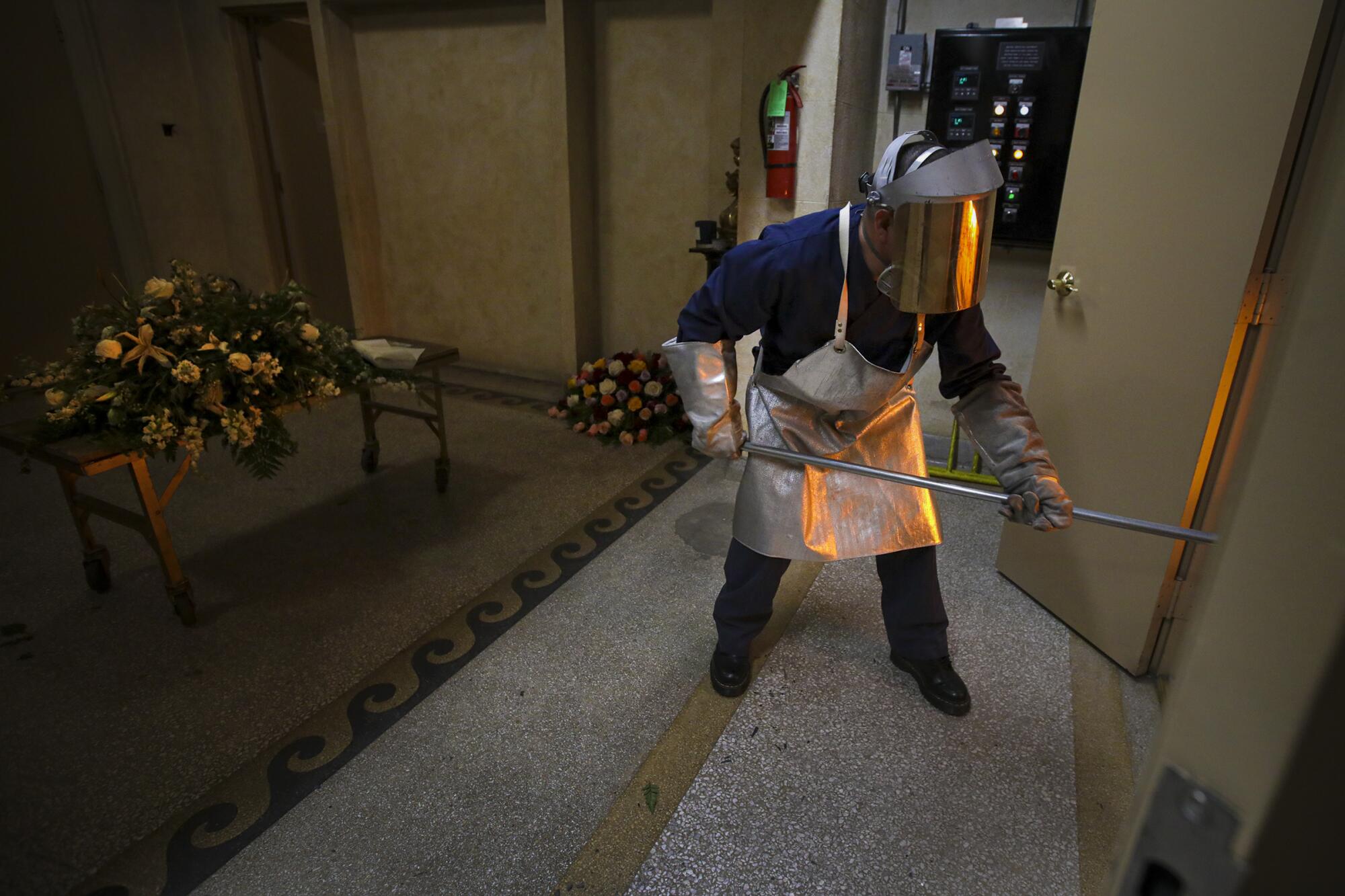
“I just received a call from a family asking if it was a possibility,” White said. “It just broke our hearts to have to say, ‘I’m sorry, we cannot offer that service at this time.’ ”
On a recent Tuesday night, White lay in bed when a nightmare jolted him awake. He dreamed that he was drowning in boxes of bodies ready to be turned into ash.
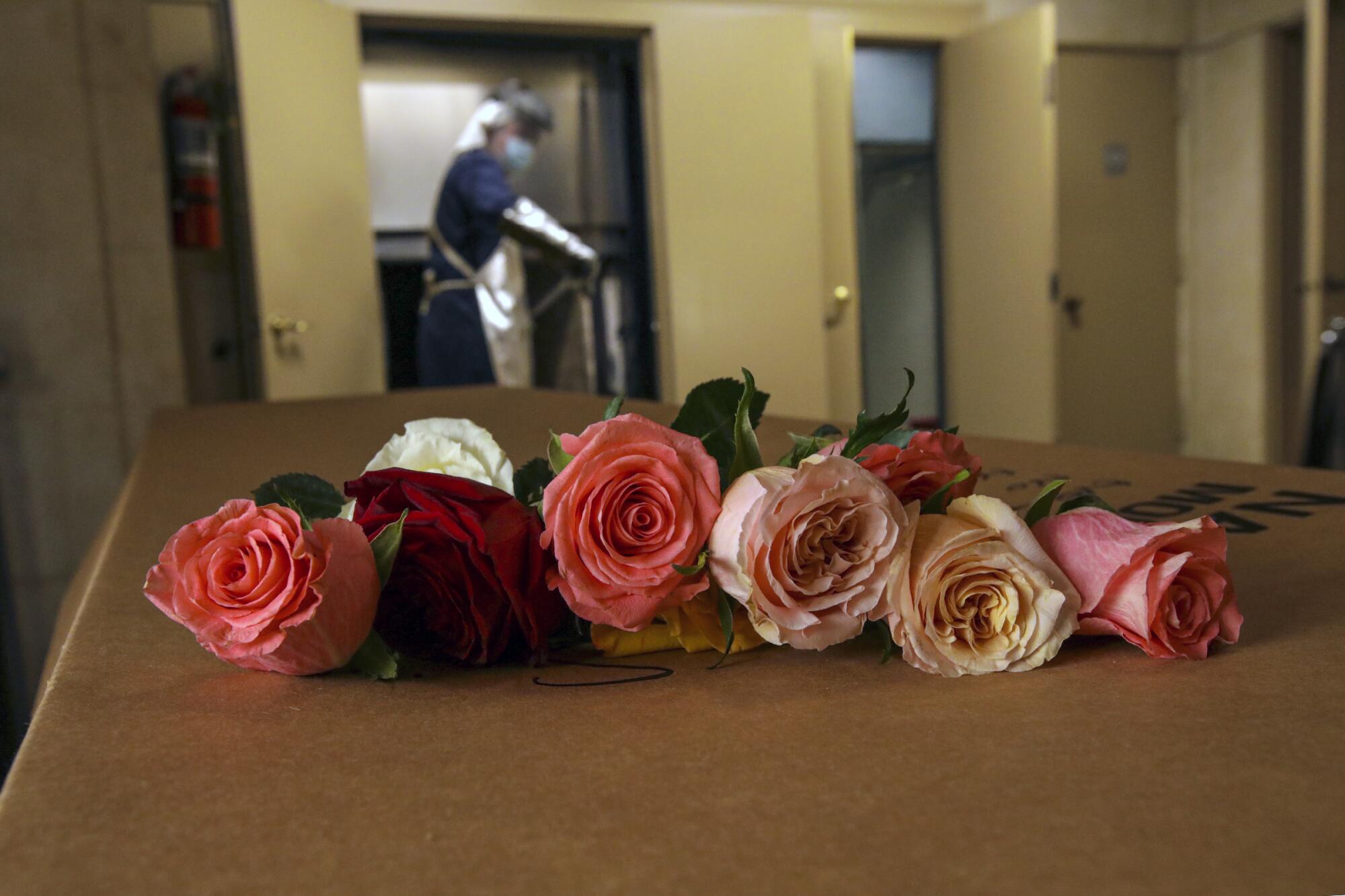
Cremation dates back to the Stone Age. The process became so prevalent among the Romans that a decree was issued in the mid-5th century BC against cremating bodies within the city.
After Christianity became the dominant faith in the empire by the year 400, burials largely replaced cremation, except for instances of war. Or plague.
In 1999, the 1,468 crematories in the United States performed 595,617 cremations, handling 25.39% of all deaths in the country, according to the Cremation Assn. of North America. By 2019, there were more than 3,000 crematories; their 1.5 million cremations accounted for 54.6% of all deaths.
The main reason people choose cremation is cost. Other reasons include a desire to create new traditions, convenience and simplicity, according to Barbara Kemmis, executive director of the cremation association.
Churches have also increasingly accepted it — although in some cases it’s conditional. In 2016, the Vatican released guidelines that allow Catholics to be cremated but does not sanction loved ones scattering the ashes or keeping them as mementos. The remains are to be preserved in cemeteries or other sacred places.
The average annual cremation growth rate has been around 1.5% for the last decade, but this year the figure nearly doubled, according to provisional data collected from 15 states from March through August 2020.
“A lot of people are choosing cremation for the first time,” Kemmis said. Some of that could be tied to unemployment due to the pandemic, putting burials out of reach financially.
The relentlessness of the pandemic has taken a toll on the association’s 3,000 members, just as it has wearied Pablo. When Kemmis decided to postpone the annual Cremation Symposium, which has been held for the last 15 years, longtime attendees asked her to reconsider.
“We need to talk about what we’ve been through over the past year,” one man pleaded.

There are no crematoriums in the Guatemalan town of San Mateo Ixtatán where Pablo was born.
Loved ones are buried in the cemetery, where gravestones are painted each year for Día de Los Muertos. It’s where Pablo’s mother was laid to rest two years after he arrived in California at age 18.
His family lived a hardscrabble life in the town, situated in the Cuchumatanes mountain range. Pablo would spend half of the day in school and the other half in the corn and wheat fields with his father.
Most of his family lived in the town, including his cousin, Francisco. Pablo left for California first, then Francisco followed.
They lived in different apartments in the same building before eventually moving in together with another cousin into a one-bedroom unit near South Lafayette Park Place and Beverly Boulevard. It was the only way they could afford the $1,600-a-month rent.
Francisco Pablo, 48, worked in a sewing factory and shared the one room with Diego. Miguel Pablo, 33, worked in an assisted living facility and slept in the living room. Even though they lived together, they rarely saw one another. They were always working.
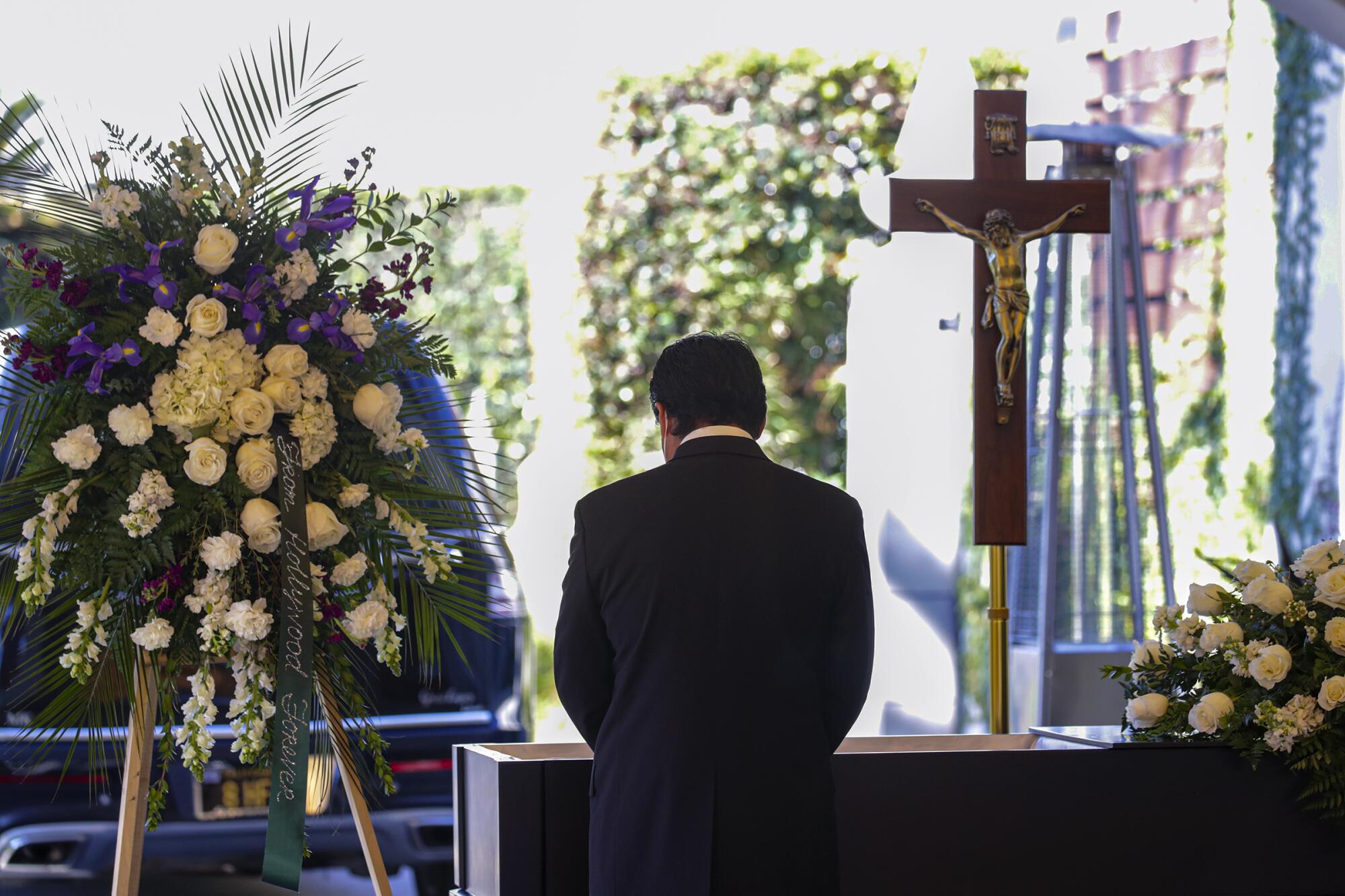
Pablo knew nothing about cremation when he started at Hollywood Forever in 2005, following 10 years at a sewing factory. He worked in maintenance before the owners asked if he’d be interested in training to be a crematory operator.
“I can try it,” Pablo thought. “Why not?”
He has done close to 4,000 cremations and seen people of many faiths grieve their dead. The Thai Buddhist ceremonies, in which a monk will turn on the main burner, chamber air and main burner air switches. The Hindu ceremony, in which the guests enter the crematory with the priest. The Sikh men who go into the chamber with their kirpan.
On a recent Sunday, Pablo prepared for the cremation of a 73-year-old woman who had died of cancer three weeks earlier. The only sound as Pablo reviewed the final checklist was the muted pounding of Aztec dancers’ drums outside the chapel for the woman’s service. Pablo works inside an office lighted by two single bulbs but no windows. That’s why he’s so pale, he joked.
He made sure he had the cremation permit from the county Department of Public Health, along with a signed authorization from the family. At the top of each sheet of paper, Pablo neatly printed the cremation number assigned to this woman, maintaining a chain of identification.
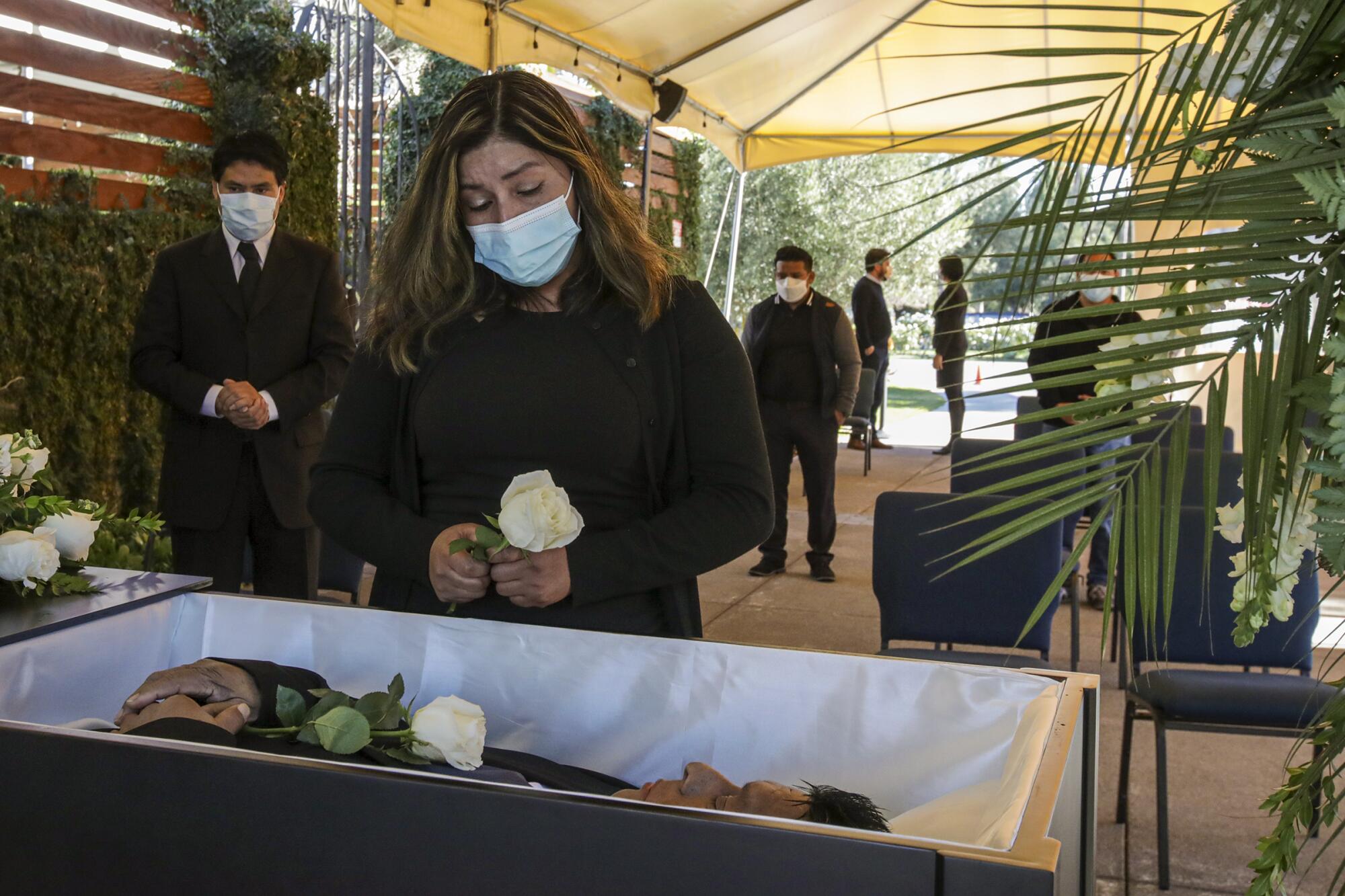
Nearby was a stack of documents for others who had died, half of them from COVID-19.
Shortly before noon, the wooden doors of the crematorium opened, and the sound of the drums filled the space. The handful of family members allowed inside by COVID-19 restrictions watched as Pablo removed the white, pink and purple flower arrangement from atop the casket.
Within minutes, he had pushed the white casket into the still dark chamber. The family, faces obscured by masks, asked how long it would take. If they could stay with her.
The process would take hours. Hours in which Pablo would watch the chimney on TV monitors to make sure there were no issues. Hours in which he’d have to don an aluminum apron and gloves in order to open the chamber and reposition the body so it could burn properly. Hours in which the remains would have to cool, after reaching around 1,500 degrees, before being removed and placed into an urn.
They likely wouldn’t finish until tomorrow, he told the family. And it was important to Pablo to maintain their loved one’s privacy.
After they left, Pablo fitted a blue scrub cap over his head and a respirator and plastic shield over his face. He opened the double doors next to the cremation chamber and headed down a staircase to attend to the remains of a 56-year-old man who had died of COVID-19 nearly three weeks earlier and had been cremated the evening before.
Pablo swept a magnet through the bone fragments to collect the screws that had once held together the casket. As he worked, wisps of ash curled up like smoke. When he was done, the ash processing machine ground the fragments down further.
In life, the man had weighed 160 pounds. In death, he weighed 10.6.
Pablo lined an urn with plastic to hold the ashes and then placed it inside a white box to take to the main office for safekeeping. He squinted as he stepped outside of the crematorium into the sun, ashes in hand.
He fit them inside the office’s cabinet, beside dozens of boxes waiting to be picked up or sent to loved ones. Among them was a box with cremation No. 4478.
Inside were the ashes of his cousin Francisco.
His mother had not wanted his body burned.
But the virus — which spread in her son’s apartment in December — left her few options. Because he’d tested positive for COVID-19, his body couldn’t be returned to Guatemala. She didn’t want him buried in a place she could never visit.
She and her family decided they would bury Francisco’s ashes back in San Mateo Ixtatán.
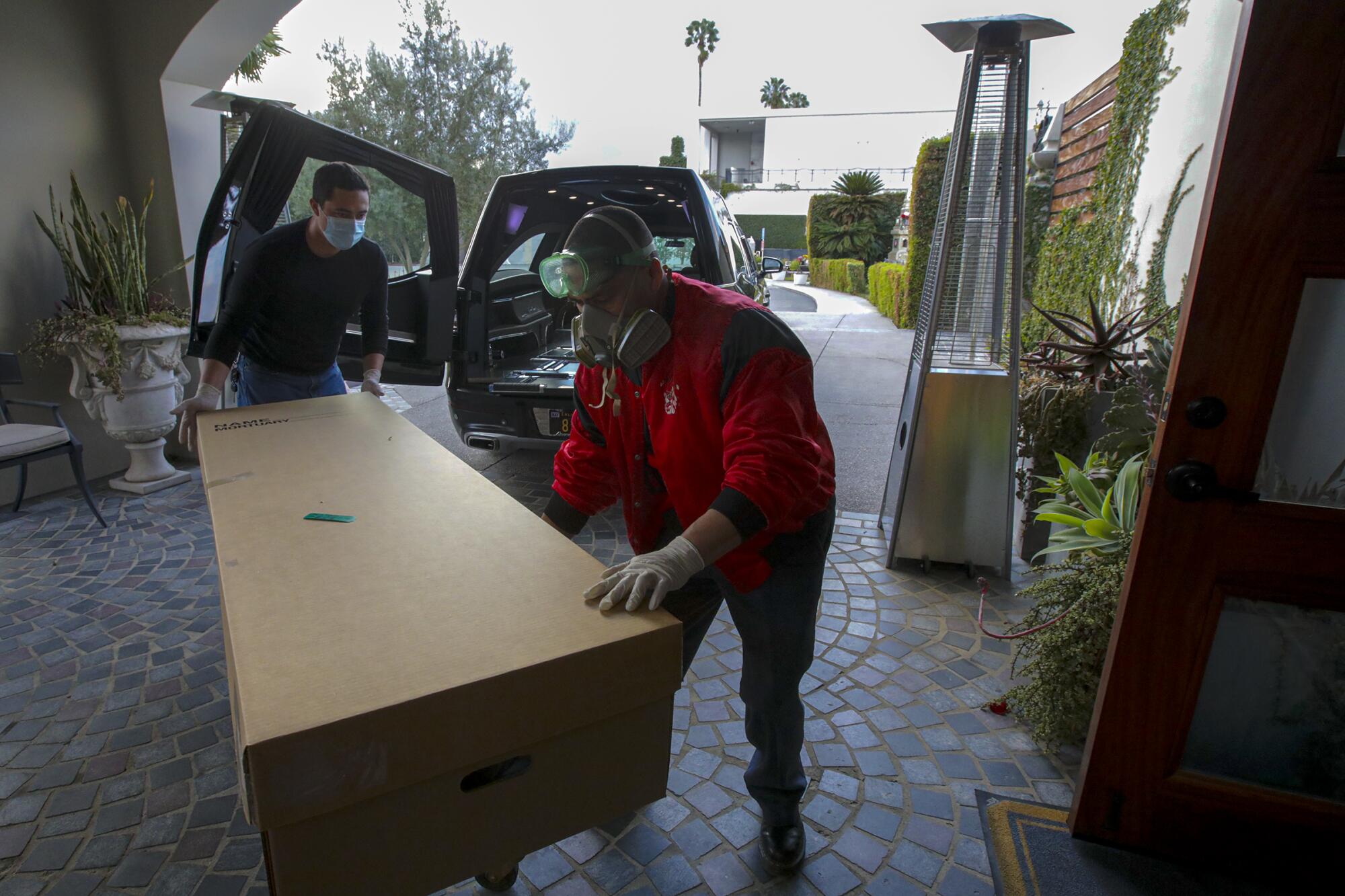
Francisco’s funeral had unfolded in front of a handful of people gathered under a tent outside of the Hollywood Forever chapel, not far from where his body, still in a casket, would soon burn.
“We gather as a family to say goodbye to the mortal remains of Francisco Pablo,” a priest intoned.
Diego, in a black jacket, dress pants and blue surgical mask, was stoic as he sat near Francisco’s 27-year-old daughter, Ana, who clutched tissues to her wet face. He’s cried at the end of movies that are emotional, but he didn’t cry that day.
It was Diego Pablo’s first service here for someone he knew. He squeezed his eyes shut and tilted his head up as “Yo Te Extrañaré — (I Will Miss You)” — by Tercer Cielo played.
“La vida es polvo, puede esparcirse en un momento.” Life is dust, it can scatter in a moment.
As the service came to an end, the cousins took turns staring into the casket, where Francisco’s mouth formed a thin line — as serious in death as he was in life. Diego made the sign of the cross before he stepped back.
Near the hearse, McBride waited with Eddie Martinez, who would be performing the cremation. This time, Diego wouldn’t go inside.
“He’s my family. I know it’s my job, but,” he paused as he tried to find the words. “I want to give him privacy more than anything.”
Death is his oficio. His job. But Pablo tries to not dwell on it more than he needs to. Si te toca te toca, he says. If it’s your turn, it’s your turn.
One day he will die. He hopes it’s after many decades. That it’s peaceful. And after that? Will he burn?
“The truth is, I don’t know,” he said. “I don’t know who is going to make the decision for me.”
More to Read
Sign up for Essential California
The most important California stories and recommendations in your inbox every morning.
You may occasionally receive promotional content from the Los Angeles Times.









